Building a Police State: Using Deportation to Speed Up the Militarization of Domestic Law Enforcement
How Trump's deportation plan mirrors Project 2025's proposal for an uber-Department of Homeland Security that uses immigration and national security threats to silence dissent, a la McCarthy.
By Sally O’Driscoll
Photo: ICE
Perfecting the Distraction Policy
The Trump administration is very good at distraction: this strategy works by drawing our attention to one specific important issue while hiding another important issue behind it. The worse the distracting event, the more effectively it draws our attention away from the underlying issue.
In the case of deportation policy, the distraction strategy works by making the mass deportation of undocumented immigrants as visually brutal and horrifying as possible. Videos circulate of masked, unidentified ICE agents descending on hapless agricultural workers or pulling children out of their parents’ arms. We hear of a farm worker falling through a 30-foot greenhouse ceiling, fleeing ICE, terrified of agents armed to the nines, masked. On Friday, Trump took the gloves off, giving “total authorization” to ICE, Homeland Security, or “any other Law Enforcement Officer who is on the receiving end of thrown rocks, bricks, or any other form of assault, to stop their car, and arrest these SLIMEBALLS, using whatever means is necessary to do so.” His language is deliberately dehumanizing.
It’s no wonder we are outraged, and should be: this is what one expects in a police state, not a democracy. Meanwhile, behind the scenes, the Department of Homeland Security is increasing its budget exponentially and turning itself into a fully militarized operation beyond the control of the Pentagon. In other words, the deportation strategy uses migrants as human pawns to quietly build the infrastructure of an autocratic state in the US.
Trump touting his massive deportation plan peaks during an Austin, TX news conference, Oct. 25, 2024.
Photo: Alex Brandon
Let’s break down the double-pronged strategy:
1. Deportations: who is being deported and where are they being sent?
Are the deportees violent criminals?
A few are; most are not. When he announced his deportation plan, Trump said he would only remove violent criminals and send them home. That is false: about nine in ten deportees have no convictions for violent or property offenses; over half are for non-violent crimes or lesser infractions. The only violent individuals removed from the US are listed on the DHS website and ICE announcements, and the real numbers say that 65 percent of people taken by ICE had no previous convictions, while 93 percent had no violent convictions. Over half the convictions (53 percent) fell into three main categories: immigration, traffic, or nonviolent vice crimes. Despite this, Trump border czar Tom Hogan claims that ICE is going after the “worst first.”
Deportations back to home countries
The Trump administration continues to try to persuade migrants to “self-deport” or voluntarily return to their home countries, using the CBP Home app with the added incentive of a $1,000 bonus. An additional catch is that they won’t get paid until it’s proven they’ve gotten home, and the details of confirmation, as well as payment, remain fuzzy. The administration keeps expanding its deportation plan because few people have opted to return to home countries from which most people fled as a last resort, having faced state persecution, political or economic collapse, or gang violence – among common reasons that spur asylum.
Under US law, they follow a specific process to apply for asylum. But the Trump administration announced on June 24that it plans to summarily end the asylum program, dismiss all current claims, and make several hundred thousand asylum seekers subject to immediate expedited deportation. That would send tens of thousands back to countries where they face death threats or persecution.
In July, after repeated attempts and legal challenges, DHS Secretary Kristi Noem cut short the TPS status for refugees from Nicaragua and Honduras, who must leave the US by September 8. That deadline impacts 72,000 Hondurans and 4,000 Nicaraguans; many were given short-term work authorizations after Hurricane Mitch in 1999, and some have continued to gain legal provisional employment contracts, many as agricultural workers.
Noem also repeatedly tried, but finally failed, to prematurely end TPS for over 500,000 Haitians who were given two-year provisional parole to stay and work here, until February 2026. In June, Noem argued conditions on the island had “improved to the point where Haitians can return home in safety.” A federal judge rejected that finding, pointing to a current State Department travel advisory that strongly warns against US travel to Haiti, and a recent UN report confirming that violent gangs now control 90 percent of the capital, Port-au-Prince, and much of the countryside. (See our report, “What Fresh Hell Is This?” on how conditions in Haiti have declined dramatically over the past two years, spurring more Haitians to seek safety elsewhere.)
Right now, Nicaraguans and Hondurans will lose their legal status and TPS benefits to legally remain and work the US and face removal as of September 9. While the TPS terminations have been challenged in court, the looming deadline has upended the lives of these families and their communities. As in Haiti, drug cartels in both countries have also continued to consolidate their power, and the economic picture is difficult.
Meanwhile, Noem and other Trump officials are celebrating the opening of “Alligator Alcatraz,” a hastily erected ICE detention center composed of large cages inside temporary tents erected in the mosquito-infested Florida Everglades and surrounded by alligators, crocodiles, and pythons. Some portions of the facility, viewed as a form of concentration camp by critics, have already flooded as the annual hurricane season approaches. The first of 500 detainees have been taken there, en route to be sent out of the US. But to where?
ICE agents detain a man during an operation in Escondido, CA
Photo: Gregory Bull | AP
Forced repatriation or “Remigration”
Trump’s shifting policy advances remigration, or forced repatriation, something we have written about that is woven into Project 2025, too. Remigration is a political concept that’s been actively pushed for a decade by European far-right groups intent on purging their countries not only of undocumented immigrants but also legal citizens. “Remigration” is not a new word or idea, but it is being newly and enthusiastically adopted and promoted by Christian nationalist and far right leaders, including in Project 2025’s orbit.
Stephen Miller, Trump’s dark general of immigration, is enthusiastic about remigration, as well as denaturalization (see below). That’s the larger goal of the deportation plan which masks a white supremacy agenda: a purge of America’s diversity, removing black and Brown citizens, including the poorest. Under an initial guise of protecting Americans from criminals, then, Miller and Trump are advancing a national racial policy: “America First” barely masks a white America First immigration agenda.
Image: Cato
Third country deportations and prison
Many migrants arrested by ICE have no idea which country they will be sent to, and it is very hard for family members to find out where they are. In June 2025, the Supreme Court allowed the Trump administration to deport migrants to third-country locations that were not listed on their removal orders. A previous district court decision had required the Department of Homeland Security to provide time and a “meaningful opportunity” to argue that they would face torture or other dangers if they were removed, but the Supreme Court decision blocked that opportunity for due process.
In the wake of that decision, Acting Director of ICE Todd M. Lyons instructed ICE agents to once again send migrants to countries where they are not citizens; his memo stated that people being sent to countries where officials have not provided any “diplomatic assurances” that immigrants will be safe will be informed 24 hours in advance – and in “exigent” circumstances, just six hours. ICE has already deported several hundred asylees to a terrorist facility in El Salvador, CECOT, deemed a torture prison by human rights monitors. They were deported on suspicion of being gang members, but most have no record, lawyers for the deportees have proven.
As of now, migrants are being deported to Guantanamo and the following countries: Guatemala, Honduras, Mexico, El Salvador, Venezuela, Ecuador, Colombia, Dominican Republic, Nicaragua, Panama, Brazil, Bahamas, Haiti, Jamaica, Cuba, Chile, Tajikistan, Saint Lucia, Trinidad and Tobago, Vietnam, Laos, Uzbekistan, Belize, Senegal, Benin, Togo, Sierra Leone, Nigeria, Chad, Mauritania, Angola, Mali, Djibouti, and South Sudan.
Miramar, Florida residents defend migrant rights in a protest of a DeSantis press conference outside ICE \ ERO offices, May 2025.
Photo: Rebecca Blackwell | AP
Offshoring jail in exchange for money deals
The US has asked many other nations to take in deportees who are not citizens of those countries; it has also been paying them to do so. Countries such as Colombia that at first refused to take deportees were punished by being threatened with tariffs and then changed their minds. El Salvador’s President Nayib Bukele has reportedly been paid at least $6 million for imprisoning US deportees at CECOT, which can hold up to 40,000 inmates; Bukele first made his offer back in February,which US Secretary of State Marco Rubio called “an act of extraordinary friendship.”
This past week, Trump sought more deals, meeting at the White House with the leaders of five African nations – Liberia, Senegal, Mauritania, Gabon, and Guinea-Bissau – who were each handed an offer to jail US asylum seekers in exchange for some deal, per the Wall Street Journal. The US proposal asked the African countries to accept the “dignified, safe, and timely transfer from the United States” of third country nationals.
In reality, news reports have documented how masked ICE and DHS agents have arrested both undocumented and green card holders without warning or warrants, putting hoods on their heads and chains on their hands and feet to transport them to ICE detention centers with inhumane conditions, per human rights groups, then transporting them in chains even while on board private deportation flights. The majority have then been kept inside locked prisons abroad, though some have been released. The pictures of hundreds of shirtless deportees shackled together like sardines on the floor of CECOT rightly shocked the world, drawing comparisons to war concentration camps.
The inhumane detention of US deportees to CECOT drew comparisons to concentration camps.
Photo: Reuters
There have been more than 600 deportation flights since Trump took office, according to groups that have tracked them; however, it is not been possible to count numbers of deported people on those flights, so specific numbers of deportees are hard to find. The reported numbers of detentions (as opposed to deportations) have been increasing since Stephen Miller demanded in May that ICE step up their work and detain 3000 migrants per day; as of now, 59,000 were in ICE detention on June 23, and 97,000 had been detained in Trump’s first five months in office.
“Apparently, the Court finds the idea that thousands will suffer violence in far-flung locales more palatable than the remote possibility that a District Court exceeded its remedial powers when it ordered the Government to provide notice and process to which the plaintiffs are constitutionally and statutorily entitled.” — Supreme Court Justice Sonia Sotomayor
Conditions for detainees in foreign detainment camps or prisons
Once deportees arrive at a destination that is not their home country, they may be asked to repatriate to their home countries. If they do not agree, they can be held in detention centers indefinitely, where conditions are often harsh and chaotic. Migrants may not have access to healthcare or basic food supplies. The New York Times described difficult conditions in Panama, where migrants were held in fenced camps near the jungle guarded by Panamanian police. Yet Panama claims it is not responsible for the US deportees, passing the buck to the International Organization for Migration (IOM) and the UNHCR, both of whom say they are not in charge either. The US also says it is no longer responsible for them because they are not in US custody – leaving deportees in a legal limbo, a judicial black hole.
At the request of the US Government, the IOM agreed in May to help people who agree to “self-deport” and register to go back to their countries of origin voluntarily – also known as Assisted Voluntary Return (AVR) – but not deportation. To date, that number remains a fraction of those in the US, but is expected to increase before the September 8 deadline for Nicaraguan and Honduran TPS holders, and before next February for Haitian TPS holders.
Protesters place white carnation flowers on the Krome Detention Center fence during a vigil protesting ICE custody and mass deportations in Miami, May 24, 2025.
Giorgio Viera | AFP via Getty Images
The case of Kilmar Abrego Garcia was the first to turn the media spotlight on conditions for migrants who have not been charged with any crime, yet were sent to maximum-security anti-terrorist prisons such as CECOT in El Salvador, a facility set up to house up to 40,000 people. Conditions there are brutal and prisoners have no access to lawyers. When Salvadoran president Bukele visited the White House in April, Trump said he was very impressed with CECOT and would like to send “homegrown criminals” – i.e., American citizens – to such prisons.
Deportations of citizens, permanent residents, and people with legal temporary visas
During the Biden administration, the CBP One app was used to provide applications for legal temporary visas for those requesting humanitarian parole. On day one of the Trump administration, more than a million of those visas were abruptly rescinded, and those who have them could now be deported. Legal residents on other types of visa have also been swept up in ICE raids, and some have been deported without due process. In March, the Trump administration rebranded the CBP One used for asylum appointments and I-94 asylum petition forms to be CPB Home, now used for self-deportation applicants.
Trump launched his policy of family separation and targeting unaccompanied children in 2018, detaining children in huge cages before deporting them.
Photo: Sergio Flores for The Washington Post
Targeting children
Horrifying stories about children remind us of the brutality of ICE. For example, at Los Angeles Immigration Court on May 29, a Honduran mother brought her two small children with her, expecting to continue their asylum case (they’d entered the country legally through the CBP One program). Instead, ICE agents in civilian clothes waited outside the courtroom, ready to pounce. The 6-year-old boy has leukemia. The child and his family were released on July 2 after a month inside the Dilley Immigration Processing Center in Texas, where the boy’s condition worsened due to lack of medical treatment; the release came after they filed a lawsuit against the Trump administration – the first legal challenge against the arrests of children during controversial operations inside courthouses. The Dilley center is run by a private prison operator, CoreCivic, and was previously shut by Biden, but Trump reopened the facility to detain families, with a contract running until at least March 2030. It houses up to 2400 individuals.
In February, ICE was also given access to an Office of Refugee Resettlement database of unaccompanied minors who had crossed into the US from the southern border, and the agency required fingerprinting of any adult sponsors of members of a household where the minor was placed. The ORR is currently part of the Department of Health and Human Services, not DHS. The ORR’s actions mirror Project 2025’s call for DHS, not HHS, to assume responsibility for child migrants (p. 478). Project 2025 advocated returning unaccompanied children even if their families are not back in home countries. While immigration advocates protested that giving ICE the database could lead to increased targeting of these youth, ORR’s new leadership claimed it was designed to increase safety for children by screening adult caretakers. Months later, we see ICE moving more youths to detention, just as advocates feared.
Other stories tell of very young children left alone on the street or inside cars when their parents are brutally arrested and dragged away by ICE – also shocking the American public. ICE has been accused of child endangerment by immigration advocates over these actions. In his first term, Trump imposed a “zero tolerance” child separation policy that separated thousands of children from their parents, and many remain separated.
Children have also been deported.
In April, at least two families that included two mothers and minor children – three of whom are US citizen children aged 2, 4, and 7 – were deported. One of the mothers was also pregnant. Immigration officials have decried the deportation of children, including those with US citizenship whose parents are not citizens. “Deporting US citizen children is illegal, unconstitutional, and immoral,” stated Erin Hebert, Ware Immigration. “The speed, brutality, and clandestine manner in which these children were deported is beyond unconscionable, and every official responsible for it should be held accountable.”
Photo: Jim Watson | AFP | Getty Images
Purging US citizens by denying birthplace citizenship
Early on, Trump moved to end birthplace citizenship via executive order – reversing a long-held right. This reversal is also a long-held conservative goal, and mirrored in Project 2025. Trump’s effort was legally challenged, but in June, the Supreme Court ruled to allow the Trump administration to deny citizenship to infants born to undocumented parents in areas of the US where individuals or states had not successfully sued to prevent implementation – including a number of mid-Atlantic, Midwest, and Southern states. Then, on July 10, a New Hampshire federal district judge issued a preliminary injunction to prevent its implementation, if not reversed by a further Trump legal challenge. The battle continues.
Denial of legal help and denial of due process
ICE has also played fast and loose with the law: officials there argue that someone who has had a charge against them dismissed still has a criminal record and can thus be forcibly removed – even though that is not true by existing law. For instance, ICE terminated the legal status of international student Suguru Onda for a dismissed citation about fishing(italics added) – clearly not a true crime. Akshar Patel, another international student, lost their legal status for a dismissed reckless driving charge.
As the CATO Institute says, “when ICE deports people without giving them their day in court, it not only deprives them of their right to clear their name but also denies justice to victims if they are guilty.” However, getting a “day in court” may become even harder than it already is: the recently passed Big Beautiful Bill limits the amount of funding provided for the Executive Office for Immigration Review and creates a cap of 800 immigration judges.
Weaponizing denaturalization
Trump’s also making good on a threat to denaturalize, or reverse citizenship, of naturalized citizens. That’s not entirely new, and is also found within Project 2025. (For a primer, see our past article about denaturalization). In Trump’s first term, his hatchet man Stephen Miller pushed to increase denaturalization of immigrants who had secured US citizenship. He vowed to go after TPS holders and even retroactively strip citizenship from some. As we have stressed in the past, the underlying agenda is to purge America of brown and Black immigrants – a white supremacy agenda.
Trump is resurrecting Joe McCarthy’s labeling of political critics as “un-American” to crack down on progressives and free speech
Moving into McCarthyism: Threatening US citizens critical of Trump policies
Trump has just upped his bellicose rhetoric, moving beyond past threats of arresting or jailing Americans who disagree with his policies. He says critics should leave the US, and just threatened to strip US citizenship from actor and comedian Rosie O’Donnell, long a thorn in his side. He has complained about O’Donnell for years, who brands him a “criminal con man.” “Because of the fact that Rosie O’Donnell is not in the best interests of our Great Country, I am giving serious consideration to taking away her Citizenship,” declared Trump on Truth Social.
As it stands, O’Donnell recently relocated to Ireland, having legally secured dual citizenship, saying she no longer felt comfortable with Trump’s attacks on LGBTQIA+ citizens, among criticisms. Looking ahead, constitutional and civil rights advocates say Trump has crossed into McCarthyism – labeling US citizens as enemies of the state. They promise a fierce legal fight over any attempts to strip US citizens of citizenship status based on their political views.
Trump’s attacks on O’Donnell suggest a new, dangerous escalation of domestic suppression of civil rights, one viewed as a desperate attempt to contain criticism, contend critics who point to a new Gallup national poll that shows a majority of Americans – 62 percent -- now disagree with his immigration policies, while only 35 percent approve. Meanwhile, US views about immigration have sharply changed. Now, 79 percent say immigration is a good thing, and 78 percent want a legal pathway to citizenship – a sharp rebuke of Trump’s actions and policies.
Even some MAGA voters who broadly backed Trump’s campaign promise to deport violent criminals now say they feel betrayed by his expanded crackdown on non-violent immigrants and legal green card holders, and by attacks on students. Meanwhile, wealthy business owners, including in farming and construction, say the ICE raids are badly hurting them and destroying the economy. While Trump has indicated he’s sensitive to the needs of Big Ag and builders, he’s increased ICE raids on farms and factories.
Construction of new special detention centers for migrants: “Alligator Alcatraz”
In June, Trump backed the rapid-fire construction of a new ICE detention Dade-Collier Training and Transition Facility, in a remote stretch of the Florida Everglades, quickly dubbed “Alligator Alcatraz,” with support from Florida Governor Ron DeSantis. Construction began June 24 on an 11,000-foot runway at the former Dade-Collier Training and Transition Airport and was completed eight days later. It has large tents to house about 5,000 migrants and large cages containing rows of hard cots inside them. The facility received its first detainees on July 1 and plans to expand in increments of 500 people; there were 900 as of July 14th, per news reports.
“From a security perspective, if someone escapes, you know, there’s a lot of alligators,” Governor Ron De Santis said about Alligator Alcatraz. “No one’s going anywhere.” The center features over 200 security cameras, 28,000-plus feet of barbed wire, and 400 security personnel. President Trump toured the facility on July 1 and commented approvingly on its quick construction; he called it an example of what he would like to build elsewhere. (Note that the requirement for tents comes directly from Project 2025, p. 148.). Soon after, MAGA supporters began posting their selfies taken by the highway sign for Alligator Alley, signaling their approval.
Democratic Congress members were allowed to tour parts of the facility on July 12, after weeks of requesting access, and described the conditions there as inhumane; they recounted stories of migrants packed into cages and denied access to lawyers. Newspapers report worms in food, fecal waste flooding floors, difficulties for prisoners contacting lawyers, and medications not given for days. “We saw people, of course, yelling for help," said Democratic Rep. Maxwell Frost. "We even saw someone yelling in the background, 'I'm an American citizen.'" Spokespeople for the facility denied the charges.
Congressional visitors horrified
On July 14th, Rep. Debbie Wasserman Schultz gave a horrified update of conditions at Alligator Alcatraz after a tour: “The pictures you have seen don’t do it justice. They are essentially packed into cages...34 detainees per cage,” she told reporters. “They get their drinking water and they brush their teeth where they poop, in the same unit. The showers provide no privacy at all,” she added; they lack curtains. For meals, she said, employee portions were meat platters far larger than a lunch of a sandwich, chips and an apple for detainees. “We’re talking about fully grown men being fed very small portions,” she said, clearly outraged.
There have been organized protests at the entrance to the facility, and some counter-protesters who support the Trump policies and say the miserable conditions will deter criminals. Indigenous tribes, who traditionally owned what was supposed to be protected land, also protested, as have environmentalists.
But Trump is also getting support: some officials in other states have expressed interest in hosting similar facilities to house more detainees. Meanwhile, the private detention industry contractors Geo Group and Core Civic are among companies raking in billions to manage the ICE facilities, while they and others also manage ICE Air deportation flights. Trump’s immigration plan reflects big business – a financial bonanza for some.
While Alligator Alcatraz is built as a processing center for moving detainees out of America, it will remain as a harsh detention center where others could be detained, including American citizens Trump wants to jail. Instead of sending “homegrown criminals” to CECOT, Trump is building at at-home prison camps on US soil as he shifts from a focus on criminalizing immigrants to criminalizing his political opponents.
While more Trump supporters are expressing their disapproval at Trump’s expansion of immigration raids far beyond hard criminals, a solid stripe of his MAGA base still champion its goals and cruelty. They are gleefully posting selfies of themselves standing by the Alligator Alley sign, revealing their full embrace of its intent to terrify and threaten feeding people to gators. Meanwhile, US scholars of racism have pointed out a direct connection to the racist 1930s postcard images depicting Black children as ‘gator bait and similar images that circulated during Jim Crow and the period of slavery in America. The embrace of Alligator Alcatraz is an overt display of white supremacy, as well as a continuation of the dehumanization of immigrants.
Alligator Alcatraz can be linked to odious 1930s racist postcards like the one above.
Image Source: Association of Tribal Archives, Libraries and Museums
“It's clear that this is not a Justice Department that's concerned with the truth. It's not a presidency that's concerned with the truth. It's just in every way, the upside down, right. Instead of doing justice, we now do bad things that make our base happy with us.” — Former U.S. Attorney Joyce Vance
2. Militarization of domestic law enforcement
While we are distracted by the horror stories of ICE arrests and deportations, the DHS is turning itself into what looks like a private army under the control of Secretary Noem.
Budget: the BBB
The 2025 federal appropriations “Big Beautiful Bill” that Congress passed on July 4 was widely reviled for its cuts to Medicaid; less was said about the $165 billion it appropriates for the Department of Homeland Security. This money will vastly expand ICE’s capacities in many area, including more agents, more surveillance, and more detention centers:
$4.1 billion to hire additional CBP personnel, including 3,000 more customs officers and 3,000 new border patrol agents.
$3.2 billion for new technology and $2.7 billion for new cutting-edge border surveillance. (Note that Peter Thiel’s company Palantir already has a $30 billion contract with ICE to track immigrants and build a “master database.”)
Funding to hire 10,000 new agents, which would allow the rate of deportations to reach as high as 1 million per year. ICE currently has 20,000 law enforcement and support personnel across 400 offices.
Support for enough ICE detention capacity to maintain an average daily population of 100,000 illegal aliens and secure 80,000 new ICE beds.
Note that the appropriations for ICE beds, detention space, a total of 20,000 ERO officers, and 5,000 attorneys for the Office of the Principal Legal Advisor (OPLA) come directly from Project 2025, p. 143. ICE will now be the highest funded law enforcement agency in the federal government.
The Bill also expands the amount of manpower available to ICE by empowering state and local law enforcement to assist federal immigration officers (under the 287(g) program). This is part of an emerging pattern: DHS is commandeering the resources of other agencies at all levels of government, like a fiefdom encroaching on the territory of those around it. “Operation At Large” is a nationwide initiative, begun in June and led by ICE, that incorporates 5,000 officers from various federal agencies, plus 21,000 National Guard troops. It pulls in agents from the FBI, the US Marshals Service, and the Drug Enforcement Administration – even some IRS agents.
Meanwhile, fewer people will be doing the agency jobs those employees are supposed to focus on. For example, FBI agents will be working on immigration arrests rather than counterterrorism or counterintelligence. Some 45 percent of all agents in the 25 largest FBI field offices will be working on immigration full time.
At the same time, there is less oversight of ICE activities, training, and hiring: the administration closed down three watchdog offices within DHS: the civil rights branch of DHS; the ombudsman overseeing immigration detention; and the ombudsman responsible for scrutinizing the administration’s legal immigration policies. (Note that the elimination of these programs comes directly from Project 2025, p. 165-6.)
LA residents faced national guard and ICE raids that employed tear gas and rubber bullets to contain protesters, June 2025.
Photo from video: Channel 4
Militarizing border control – and domestic enforcement
In LA in June, Trump already deployed 4000 National Guard troops against the governor’s wishes; he later sent in 700 Marines. US law allows the president to use of National Guard troops against a governor’s wishes if there is a rebellion or invasion, or if he invokes the Insurrection Act. Neither scenario happened in LA. Instead, Trump relied on the theory of Protective Power to justify use of the military against civilians in the US. (Note that Project 2025 specifically calls for the use of military at the borders, p. 166-7.) The mission of the National Guard in LA was to “protect” ICE agents as they made arrests.
Use of private and nongovernmental actors — including far- right extremists
There is one more segment to add to DHS’s army: nongovernmental actors, many of them members of extremist hate groups such as the Proud Boys. Many of the Proud Boys were convicted of crimes in relation to the January 6, 2021, riot; they were all pardoned by Trump. Enrico Tarrio, the Proud Boy leader who was serving 22 years for seditious conspiracy, was also pardoned. In February, immigration czar Tom Honan met with Tarrio on at least four occasions prior to Trump’s election to discuss deportations in Chicago, among issues, per the Southern Poverty Law Center. Honan has also met with a far right instigator, Terry Newsome, in both Chicago and Washington, DC, to discuss deportation plans; he is also the Illinois chapter leader of the anti-student inclusion group Parents Involved in Education, which is based in Darien, Illinois, and has led anti-LGBTQ advocacy on behalf of parent’s groups. Newsome has extrusive ties to extremist groups, per the SPLC. He and Tarrio actively use racist language to discuss Trump’s deportation plan, while the Proud Boys have boasted about their growing ties with ICE.
It comes as little surprise, then, to witness the resurgence of neo-Nazi groups who recently felt emboldened to openly march in Lincoln Heights, OH, near Cincinnati, shouting racist slogans and touting white supremacy signs and symbols. They were such a threat that Black community leaders created armed ‘Safety and Watch’ groups to stand outside schools and public buildings in Lincoln Heights.
The hate groups also spoke up against Haitian immigrants in Springfield, OH, when Trump and JD Vance advanced the racist, and false, allegation that Haitian immigrants were eating Springfield pets. Trump’s embrace of Alligator Alley, and the proposed eating of immigrants by alligators ; both dehumanize brown and Black foreigners and present a violent solution to remove them.
Tarrio now touts use of the ICERAID app, which gives people a way to report anyone they believe is an undocumented immigrant, and to earn cryptocurrency for turning people in. In other words, Trump has turned to would-be vigilantes and is rewarding bounty hunters. The Proud Boys have spoken openly about using lethal violence against those who protested ICE in LA and have offered to help with arrests.
American neo-Nazis waving flags with swastikas on an I-75 overpass between Evandale and Lincoln Heights, Ohio, February 2025.
Photo: Liz Dufour | The Cincinnati Enquirer |USA Today Network| Imagn Images
Looking ahead, Trump’s use of the military in LA and elsewhere may function as a disturbing precedent that, in effect, puts ICE in charge, with very little oversight and no transparency. It also continues a policy of militarizing domestic law enforcement.
All of it mirrors Project 2025’s call for an Uber-Department of Homeland Security that integrates various law enforcement agencies and is loyal to the president, though Project 2025 calls for giving it Cabinet-level status. It also mirrors Project 2025’s proposal to elevate the threat of domestic terrorism and national security to crack down not only on immigrants, but ordinary Americans who disagree with the president’s policies or refuse illegal orders. Critics rightly view it as the construction and consolidation of a police state.
Photo: Michael Nigro | Reuters
Help us Reach More People:
As always, we invite you to share this information by restacking this post, and consider cutting and pasting links on your social media and ours. We’ll continue to add new resources at Resisting Project 2025.
Heads up: July 17th More Good Trouble National Action
Don’t forget to join any of the many nationwide Good Trouble Lives On actions on July 17th, a celebration of resistance on the anniversary of the passing of the great civil rights leader John Lewis. You can find a map of all the different events already scheduled at this link. You can also access graphics, social media and other advocacy toolkits, learn about sponsors and partners, and keep abreast of updates. — S’OD



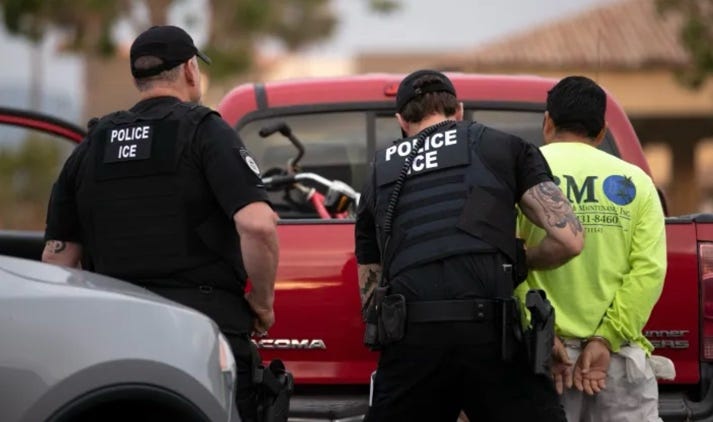

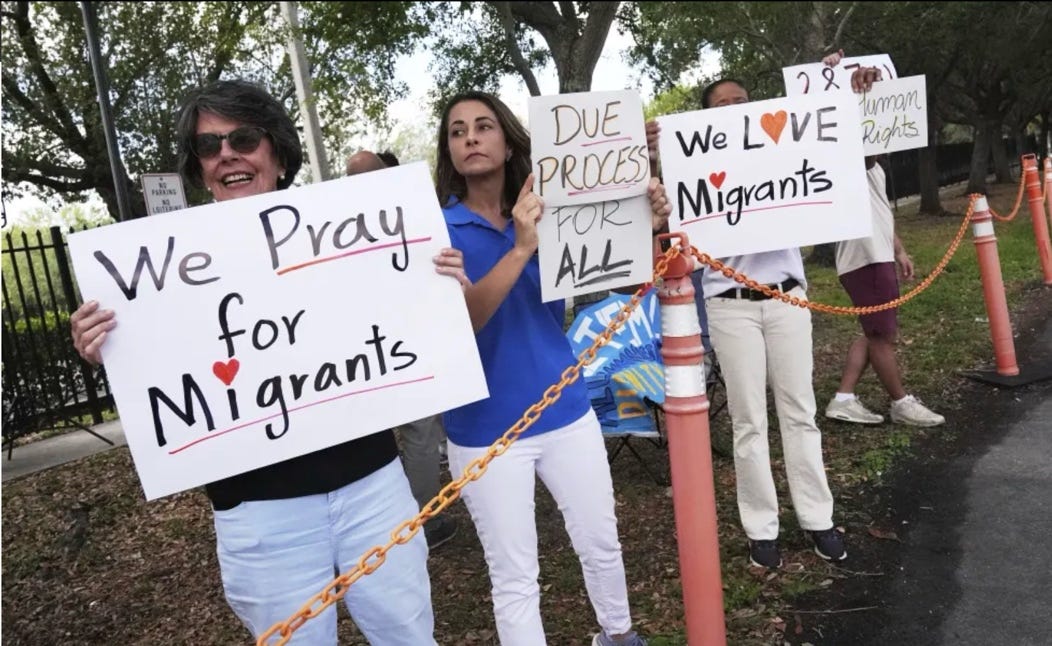
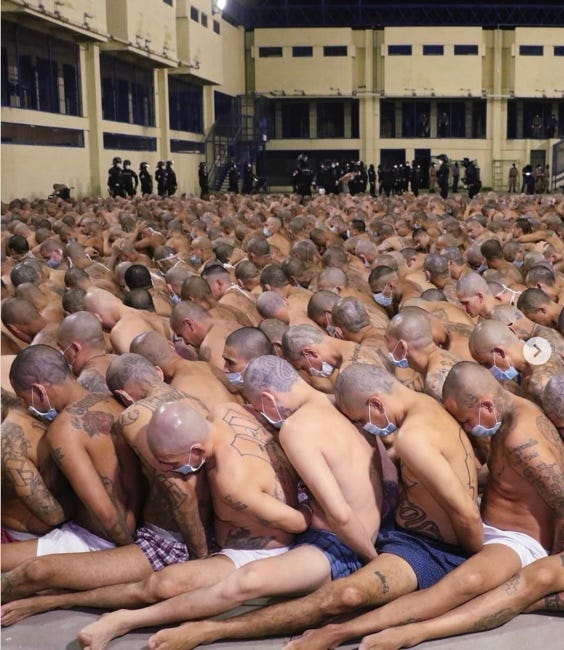


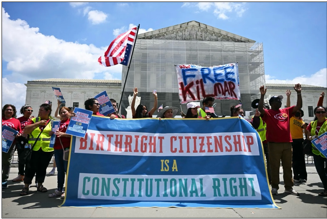


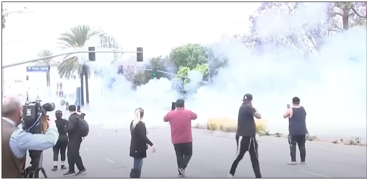
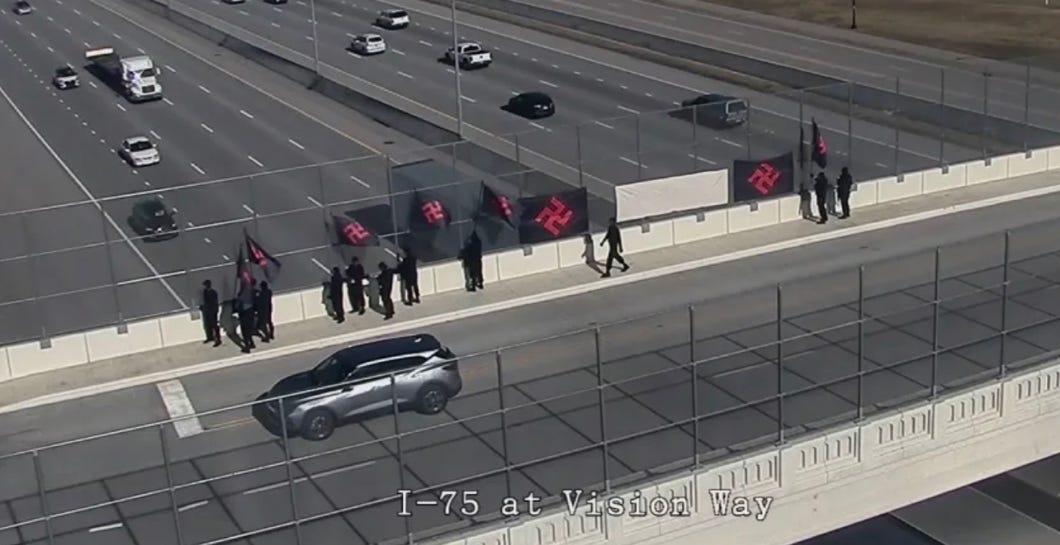

This is a must-read. Long, but worth it.